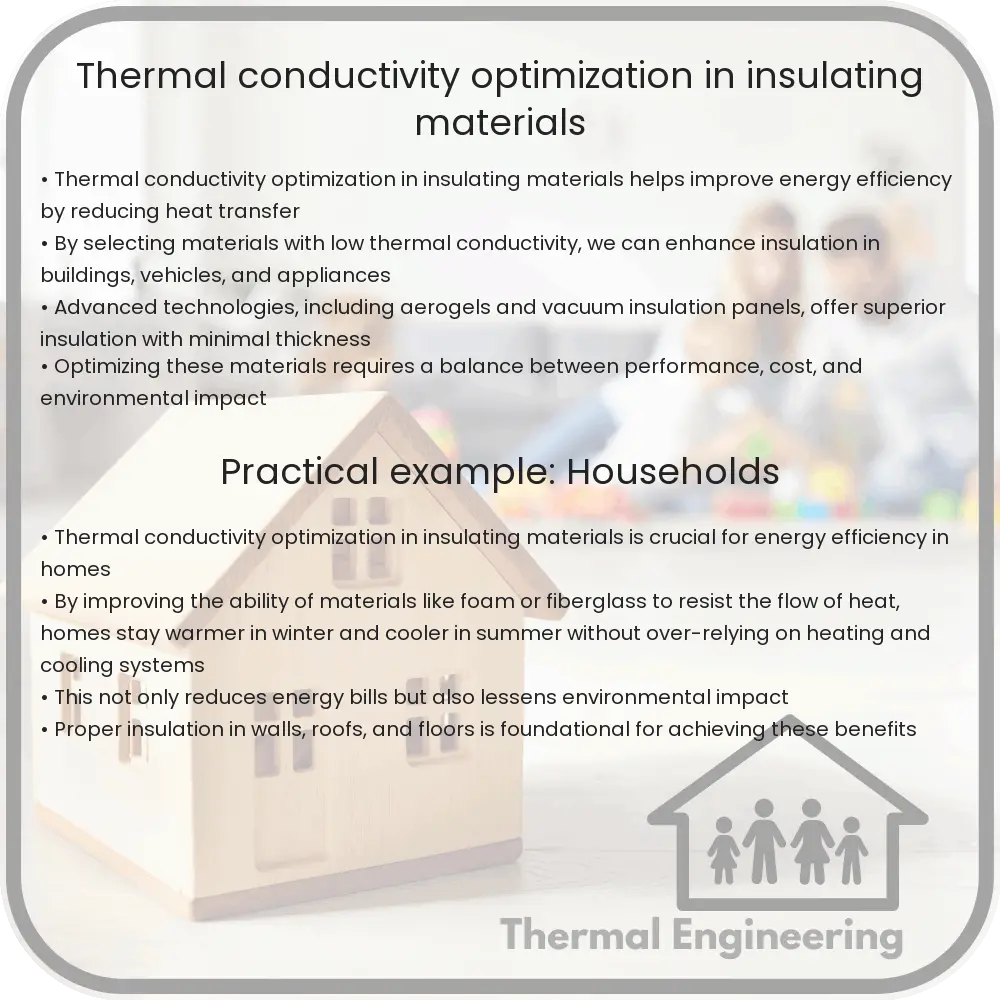Learn how optimizing thermal conductivity in insulating materials enhances energy efficiency and temperature control in various applications.

Understanding Thermal Conductivity Optimization in Insulating Materials
Thermal conductivity is a material property that measures the ability of a substance to conduct heat. In the realm of building and construction, as well as in many engineering applications, optimizing the thermal conductivity of insulating materials is crucial for enhancing energy efficiency and maintaining temperature control. This article delves into the basics of thermal conductivity, discusses its significance in insulating materials, and explores methods to optimize it for better performance.
The Basics of Thermal Conductivity
Thermal conductivity, denoted as “k,” is an intrinsic material property that indicates how efficiently heat is transferred through a material by conduction. The higher the thermal conductivity of a material, the more easily heat can pass through it. Conversely, materials with low thermal conductivity are better insulators because they resist heat flow. The unit of thermal conductivity in the International System of Units (SI) is the watt per meter per Kelvin (W/(m*K)).
Why Optimize Thermal Conductivity?
In insulating materials, the primary goal is to minimize the rate of heat transfer to save on heating and cooling costs and improve comfort levels. Effective insulation helps in maintaining the desired temperature within a space, regardless of the external environmental conditions. Optimizing the thermal conductivity of these materials involves lowering it to a point where the heat transfer is greatly reduced.
Materials and Techniques for Optimization
- Fibrous Materials: Materials such as fiberglass, mineral wool, and ceramic fibers are commonly used for insulation due to their low thermal conductivity. The small air gaps within the fibers significantly reduce the heat transfer, as air has a very low thermal conductivity.
- Foam Insulation: Polyurethane foam and polystyrene foam are examples of synthetic insulation materials known for their very low thermal conductivity. Their cellular structure contains small air pockets that trap air, minimizing heat transfer.
- Aerogels: One of the most effective insulating materials available today are aerogels. They possess an extremely low thermal conductivity due to their porous structure and are used in high-tech applications such as aerospace and scientific instrumentation.
Recent Advances in Thermal Conductivity Optimization
Researchers and engineers are continually striving to develop materials with lower thermal conductivities. Recent advancements include the development of vacuum insulation panels and gas-filled panels, which use the principle of minimizing gas conduction by reducing the pressure inside the panel or filling it with gases that have lower thermal conductivities. Another innovative approach involves the use of phase change materials (PCMs) that absorb or release heat during phase transitions to provide additional thermal resistance.
Challenges and Future Directions
Despite advancements, there are challenges in thermal conductivity optimization, particularly in terms of balancing cost, environmental impact, durability, and fire safety. Future research is likely to focus on sustainable materials, enhancement of existing materials, and innovative designs that incrementally improve thermal insulation properties. Technologies that adjust thermal conductivity dynamically in response to environmental conditions are also a promising field of study.
The optimization of thermal conductivity in insulation materials plays a crucial role in energy conservation and environmental management. By continuing to advance in this field, we enable more efficient thermal management solutions in buildings, transport, and other critical sectors, contributing to global sustainability efforts.